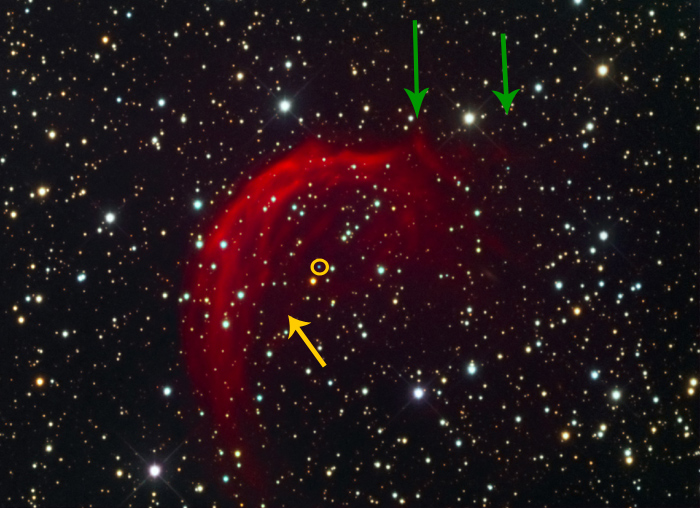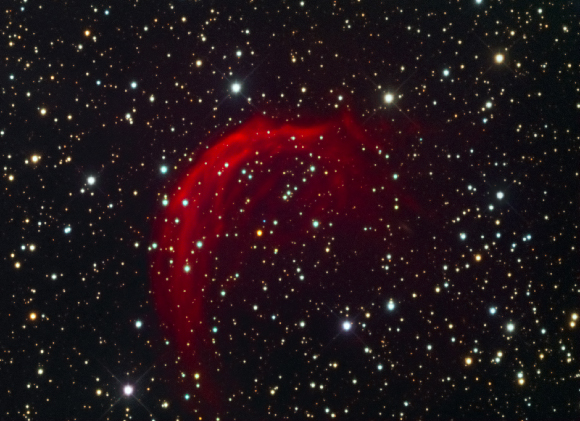| This planetary nebula, discovered in 1951, is rather unique because of its interaction with the interstellar medium (ISM). A planetary nebula (PN) is formed when a star sheds ionized shells of gas late in its life. PN are usually symmetrical. Sh2-188 presents a one-sided appearance because it is traveling fast and interacting with the ISM. The bright, southeastern arc is the bow shock, while the faint, northwestern structure is the trailing tail. The star that formed this PN is moving at 125 km/sec. That's almost 280,000 mph!
Although the progenitor star of this PN may be old, the PN is thought to be only 22,500 years old. Despite its young age, the PN has already lost 2/3 of its mass. It is believed that this missing mass has been swept downstream as the bow shock sheds vortices, or whirlpools, of material into the tail.
A silmilar phenomenon was recently imaged by the Galex satellite when it trained its ultraviolet cameras on the star Mira:
Mira's Tail
See the image below for identified structures in Sh2-188.
|

